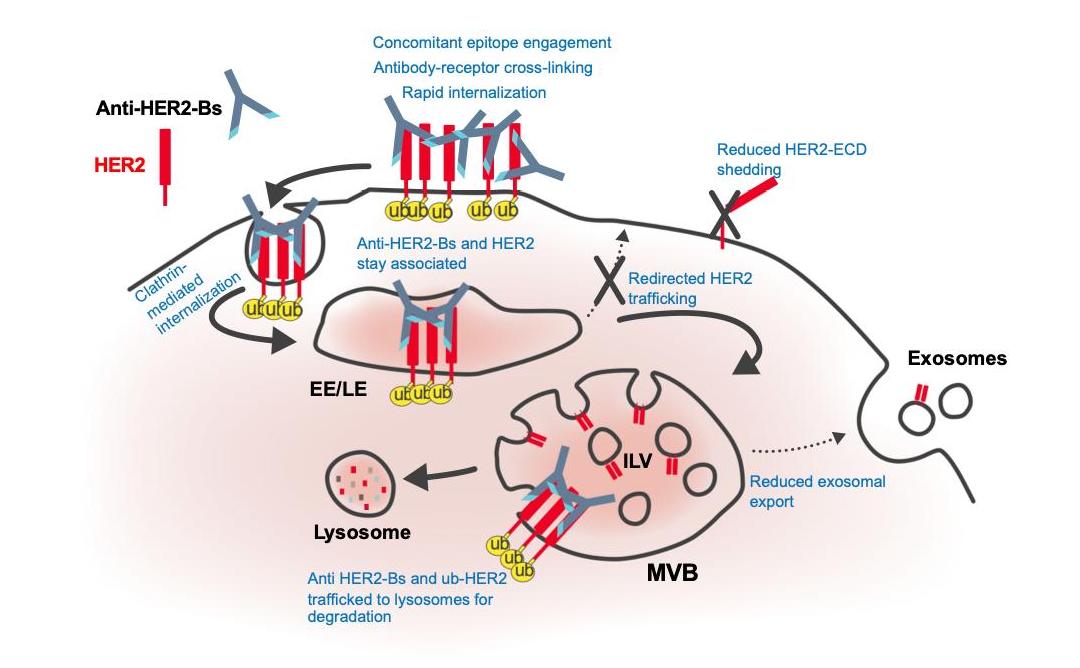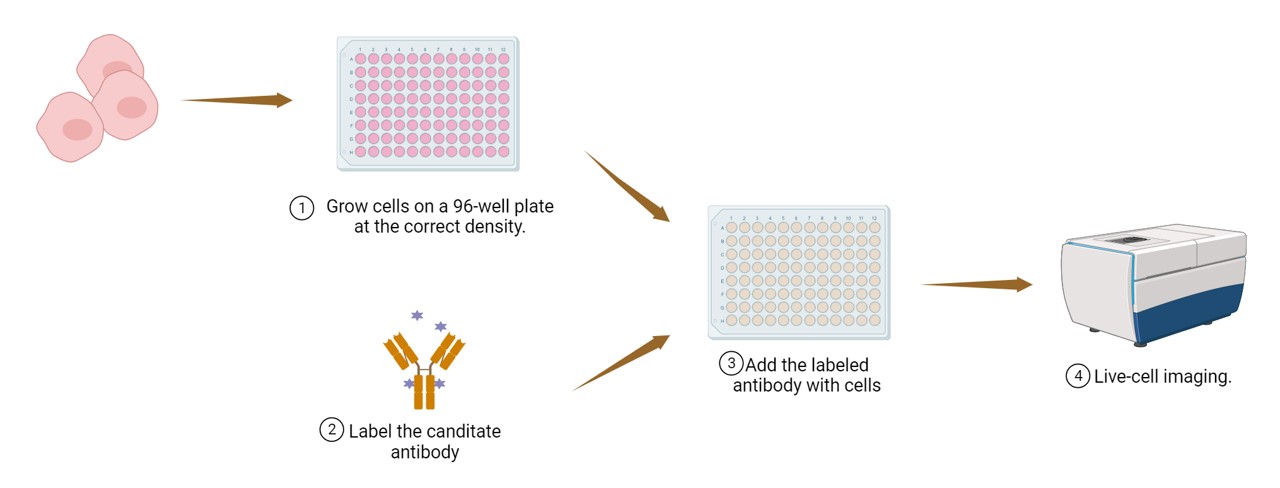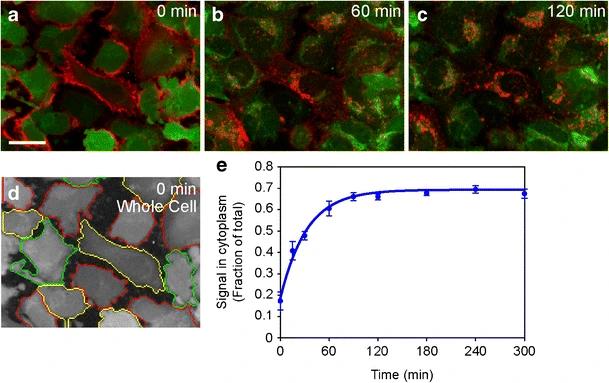Live Cell Imaging based Internalization Assay
Antibody Internalization
Antibody-drug conjugates and monoclonal antibodies (mAb) are two biological therapeutics that are widely utilized in medical treatments. Immune cells that are involved in antibody-mediated immunity perform the crucial task of internalizing antibodies. This process plays a vital role in eliminating invading pathogens and ensuring the proper functioning of the immune system. Noteworthy, the effectiveness of antibody internalization is closely linked to the advancement of effective antibody-drug conjugates (ADCs). As a result, quantifying and contrasting antibody internalization is an essential step in the biopharmaceutical production process.
 Fig.1 Anti-HER2 biparatopic antibody-induced fast internalization and redirected trafficking of HER2.1
Fig.1 Anti-HER2 biparatopic antibody-induced fast internalization and redirected trafficking of HER2.1
Our Live-cell Imaging-Based Internalization Assay
Creative Biolabs is excited to provide an innovative live-cell imaging-based internalization assay that is a quick, dynamic, high-throughput assay of antibody internalization. Our live-cell imaging-based internalization assay is applicable for antibodies from all common species or certain specific species. In this assay, the internalization of antibodies is detected directly in a 96-well plate, moreover, antibody internalization can be accomplished quickly, kinetically, and at high throughput using only one dye addition step.
At Creative Biolabs, in combination with our comprehensive customized services, we have more confidence in presenting desirable high-quality outcomes to help global customers screen ADC candidate molecules with high effectiveness and high throughput.
 Fig.2 Workflow of our live-cell imaging-based internalization assay.
Fig.2 Workflow of our live-cell imaging-based internalization assay.
Our Advantages
- Effective: Antibody internalization rates and concentration-time curves are assessed in a single experiment.
- Real-time: Observe living cells in real-time with a short detection gap for a long time.
- High-throughput: The screening results may provide more potential for antibody discovery.
- One-stop service: we provide one-stop customized services to enable the projects to run smoothly.
Representative Data
Data 1: Using confocal imaging, the internalization kinetics of biopharmaceuticals that were fluorescence-tagged in living cells were observed in this study. A quantitative algorithm for image analysis was also implemented to ascertain the internalization rate. The findings suggest that live-cell imaging is remarkably sensitive in detecting internalization. This technique allows for the analysis of kinetics in cells containing a minimal number of 5,000 receptors. Furthermore, this imaging methodology is applicable for the cells in both adherent and suspension states. Three factors were primarily responsible for the precise evaluation of the kint (Internalization rate constant): continuous monitoring of internalization in living cells, rapid acquisition of confocal images, and a quantitative image-analysis algorithm.
 Fig.3 Antibody internalization in adherent cells.2
Fig.3 Antibody internalization in adherent cells.2
Frequently Asked Questions (FAQs)
Q1: What does antibody internalization mean?
A1: It is typically crucial to discover antibodies that internalize into cells effectively, rather than only adhering to antigens on the cell surface, for the creation of clinically powerful anti-cancer antibody medicines. Antibodies against cell surface antigens may promote or disrupt antigen internalization via particular interactions with these proteins. It is hypothesized that cancer cells displaying the surface antigen are essential for the absorption of antibody-drug conjugates, which is necessary for their anti-cancer activity.
For more details about our live-cell imaging-based internalization assay, please don't hesitate to contact us.
References
-
Cheng, Jackie, et al. "Molecular mechanism of HER2 rapid internalization and redirected trafficking induced by anti-HER2 biparatopic antibody." Antibodies 9.3 (2020): 49.
Distributed under Open Access License CC BY 4.0, without modification. -
Vainshtein, Inna, et al. "Quantitative measurement of the target-mediated internalization kinetics of biopharmaceuticals." Pharmaceutical Research 32 (2015): 286-299.
Distributed under Open Access License CC BY, without modification.
For Research Use Only.
